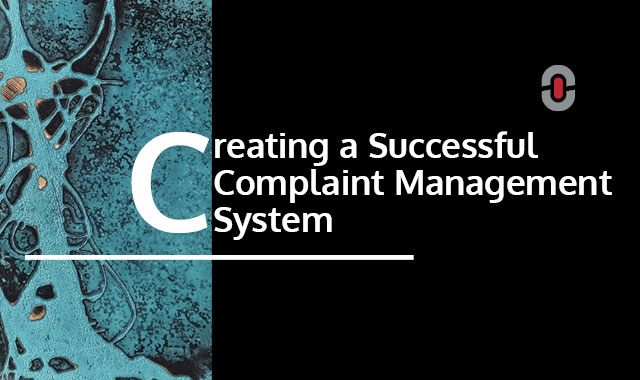At 1-StopAsia, we fully understand the need for an effective complaint management system in place. Just like in any organization, feedback and complaints from customers are a natural occurrence. However, the difference between successful and unsuccessful organizations lies in how complaints are handled and whether there is a quality outcome to them.
In this article, which is part two of our series, we will discuss how we have created a successful complaint management system to ensure greater customer satisfaction and more positive and productive outcomes for them. Take a look at our processes and systems created and all the efforts we make to ensure this happens.
Prerequisites for a successful complaint management system
From the outset, a good customer complaint system is proactive and not reactive. This means that certain prerequisites must be in place to ensure that a customer complaint gets handled effectively and efficiently. This is why it’s necessary to ensure that your goals and expectations for quality control are clearly defined, that you have the right team assembled to deal with customer complaints, and that there is a feedback policy and guidelines in place.
But in addition to this, different teams require feedback training, there are different processes and stages that must be followed, records must be kept, the implementation must be carried out, and of course, success and effectiveness need to be measured. We’ll cover each of these aspects in some more detail below. Let’s dive in.
1. QC goals definition & expectations
They say that hindsight is 20/20, but we didn’t want to approach our efforts in a reactive manner but rather in a proactive manner. This is why we started by testing out one language (Japanese) and our output for it by striving to deliver better quality right from the beginning of the process and not at the end. This enabled us to detect issues quickly and prevent them from reoccurring. We also strove to control quality at the initial step and not just at the endpoint.
2. QC team assembled
Once the goals of the process were clarified, we assembled a team that would ensure quality control throughout. This team consists of a Feedback Officer, a Team Leader of APM teams, QA and Linguistic Department Manager, a Production Director, as well as an HR & Admin Representative.
3. Feedback policy, guidelines, & training
As part of our complaint management system, we created a feedback policy and guide and also created a profile and guidelines to be followed by the Feedback Officer. In addition to this, we created feedback training for AMs, PMs, and linguists. We further created a feedback process and multiple stages in order to match the operations within the company.
4. Keeping records & implementation
As part of the record-keeping and implementation stage of our complaint management software, we created a designated Google Drive and workspace. The entire production process is based on a job number and record keeping takes place in a structured shared Drives policy with limited access based on documentation requirements.
The record-keeping and implementation phase involves five separate stages, which will be covered in more detail below, as well as involves the participation and involvement of client and internal communication, regular QC meetings, a CRM, and a workgroup.
The breakdown of what really happens behind the scenes for each stage is as follows:

- Feedback received: feedback is immediately assigned to the Feedback Officer. AM/PM confirms to the client that feedback has been received and they summarize all the files and communication and upload them to the relevant Drive folder, which is shared with everyone involved. The AM/PM then registers the feedback in the CRM and adds all the relevant people. The information is sent to the Feedback Officer who engages with the client immediately and gives clear deadlines for actions to be taken.
- Added in F1: as part of the Feedback Management Policy, the feedback is added to F1 for further analysis and statistical evaluation. This is later used to assess the progress of the matter and the quality of the process followed.
- Investigation: different people from the teams are assigned different tasks. In addition, information is assessed, clarity is sought from the client and reports are prepared and evaluated which are then delivered to the client. Any production issues are supervised by a Production Director while linguistic quality issues are supervised by a QA and a Linguistics Manager and the QA team. The Feedback Officer is involved in all levels of communication to enable them to transmit proper questions and messages to the client. APMs and APM team leaders follow the information and then update everyone accordingly.
- On hold: this is the final stage before the investigation is closed. Here, we have sent our position, proposals, and measures and are awaiting the client’s response. In terms of deliverables, which we refer to as a “Feedback Pack” can include custom processes suggestions, a full investigation feedback report, a custom production schedule, full audit of assets per client and end-client, a post-translation feedback form, root cause analysis, and linguistic quality improvement measures.
- Feedback closed: once the client has come back to us, we will mark the deal as closed. It can have two outcomes: positive or negative.
5. Measuring Success & Effectiveness
The final prerequisite as part of our customer complaint system revolves around measuring success and effectiveness. However, this wouldn’t be possible if we didn’t have a set of deliverables for each type of feedback received. This involves using Google Drive job folders and creating a feedback workgroup. In addition, we implement all the introduced measures at all levels.
However, we also need to measure the quality of the process and the quality of the language. But quality is not only related to these two aspects. Instead, it can expand to feedback on the quality of the service and project management and even a complaint about the boss. To us, it’s all about understanding what the client wants, how they operate on every level in their company, and what business “language” they use to talk to you.
All this is measured through client happiness and partnerships, regular follow-ups on issues that have occurred, and taking internal preventative actions as opposed to taking a reactive stance.
Where can things go wrong with a complaint management system?
Despite this five-step process with sub-processes involved in some of the stages, things can sometimes go wrong. Luckily, we have identified the potential challenges that may arise due to an absence of a complaint management system and these include lack of recognition when we have an issue, failure to recognize complaints from the team, lack of escalation of the issue, slow/no communication with the client, lack of transparency for the client, a lack of understanding of the client’s processes and priorities, and a lack of flexibility in finding a solution. This is why customer complaint software is so crucial to ensure a quality and effective result for the client.
In conclusion: A complaint management system needs to be underpinned by quality
When it comes to using customer complaint software, we completely recognize that we need to deliver solutions that are within our capabilities. We also recognize that some stumbling blocks may be a lack of real result-oriented measures, offering solutions that aren’t implemented, or offering detailed explanations without real solutions.
This is why as part of our complaint management system, we make use of a Feedback Officer who constantly and continuously seeks improvement for each of our customers through identifying opportunities, initiating conversions, and following through with their execution.
Our complaint management software also helps us ensure that we get client feedback regularly through all channels available, that we do quarterly revisions with the client as well as performance analyses and workflows assessments, we seek to get feedback on quality, map out their processes and goals, identify points for improvement, and attempt to reduce potential human errors.
